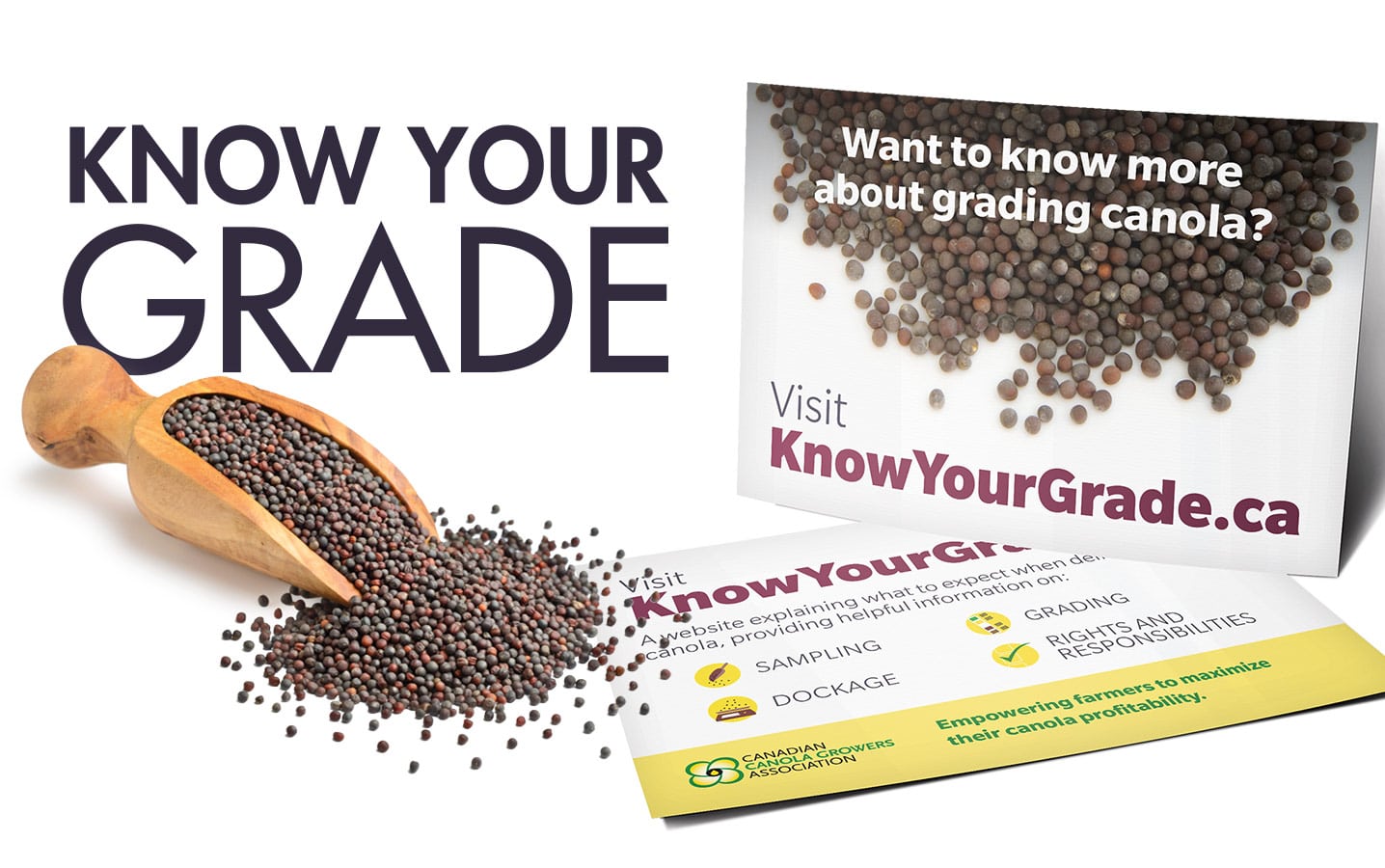Know Your Grade ahead of time
The Canadian Grain Commission has rules for grading and dockage of all major crops. If grading results vary significantly among buyers, the Canadian Grain Commission (CGC) reminds growers that they can ask to witness the grain grading and dockage tests. Growers also have the option to officially dispute an elevator’s grading result.
Companies should assess grade and dockage as per the Official Grain Grading Guide, says Daryl Beswitherick, the CGC program manager for national inspection standards. “And if a producer doesn’t agree, they should use the ‘Subject to Inspectors grade and dockage’ provision,” he says.
Should a grower exercise that right, an elevator must issue the grower an interim primary elevator receipt and prepare a 1,000-gram grain sample that both parties agree is representative of the delivery. A CGC inspector will inspect the sample, determine its grade and dockage and send a Submitted Sample Certificate with the results to both parties. At that point, the producer can exchange the interim primary elevator receipt for a primary elevator receipt or a cash purchase ticket that reflects the sample’s results.
The CGC inspector’s results can be appealed, which requires contacting the CGC’s service centre within 15 days from the date on the Submitted Sample Certificate and asking that the sample be sent to the Chief Grain Inspector for Canada. The chief inspector will provide a final decision, and each person named in the request will receive a record of the decision.
Farmers, however, rarely dispute grain grade and dockage via the CGC. The government department only receives 150 to 200 samples a year, Beswitherick says.
“Some farmers don’t know about the program, and some farmers tend not to use it because they’re leery of upsetting their grain buyer,” he says.
Harvest Sample Program
More popular is the CGC’s Harvest Sample Program, which received 13,500 samples last year. Of those, 2,600 were canola, Beswitherick says.
“What we like to tell producers is to know their grade and dockage prior to delivering their grain.”
“What we like to tell producers is to know their grade and dockage prior to delivering their grain,” he says. “You can [use the Harvest Sample Program to] get information about the commodity you’re trying to market, and then know when someone gives you a good deal or not.”
When signing up for the free voluntary program, farmers will receive a kit containing envelopes for sending in samples of their crop. The CGC will provide an unofficial grade – because samples aren’t collected by a CGC inspector – as well as a dockage assessment and oil, protein and chlorophyll content in the case of canola.
CGC recommends farmers mail their samples as soon as they finish harvesting, adding it doesn’t accept samples after November 30. Results are available within 15 business days of a sample receipt, and are emailed as soon as testing is complete. Results can also be accessed through farmers’ online accounts.

Know your grain and rights
Producers unsure of their grain quality or their right to get a fair shake can find assistance from the Canadian Canola Growers Association (CCGA).
“Last year, CCGA created a farmer resource focused solely on canola grading, with the goal of raising awareness among farmers of what to expect when delivering their grain and what rights they have,” says CCGA policy manager Janelle Whitley.
The association’s main resource for farmers is Know Your Grade, which provides up-to-date information on sampling, dockage and grading canola, as well as basic producer rights.
“Of particular interest are two videos on canola dockage, showing what dockage is and how it relates to a farmers’ delivery, and the official dockage process,” says Whitley.
Farmers can also learn more at Prairie-wide producer events – like the upcoming FarmTech, CropSphere and CropConnect conferences – where they can visit with CGC representatives to learn more about its provisions and programs available to farmers (detailed above), and about how canola and other crops should be graded.
For more details about the CGC’s show schedule, email contact@grainscanada.gc.ca or call 204-984-0506 or toll free at 1-800-853-6705.
CGC service centres
Got feedback? Please share your thoughts on this article. Do you need more information? Do you have a follow-up article idea? Email the editor at whetterj@canolacouncil.org.
In the meantime, producers submitting samples have a number of service centres to choose from.
In Saskatchewan, farmers can get in touch with Saskatoon inspection supervisor Joey Vanneste at 306-975-5714 or joey.vanneste@grainscanada.gc.ca or Weyburn’s Judy Elias at 306-848-3350 or judy.elias@grainscanada.gc.ca.
In Alberta, inspection supervisor Scott Kippin can be reached in Calgary at 403-292-4211 or scott.kippin@grainscanada.gc.ca.
No service centres exist in Manitoba, but farmers in the province can either send their samples to service centres in Saskatchewan or drop them off at the CGC’s Winnipeg headquarters, Beswitherick says.





